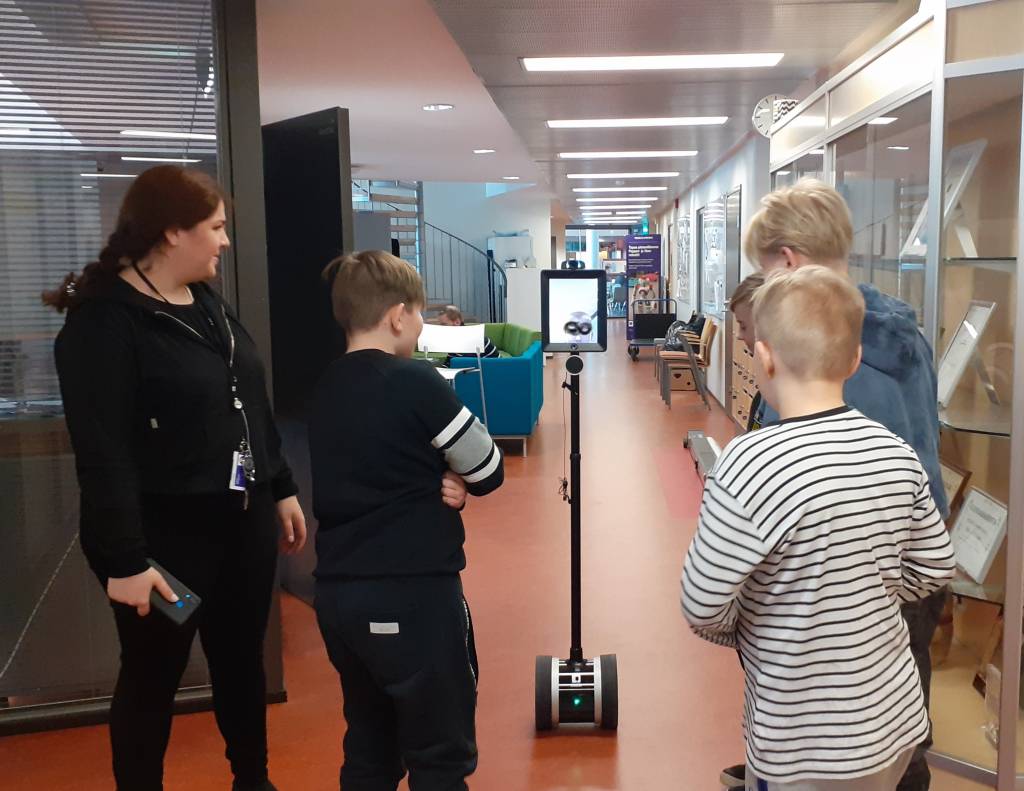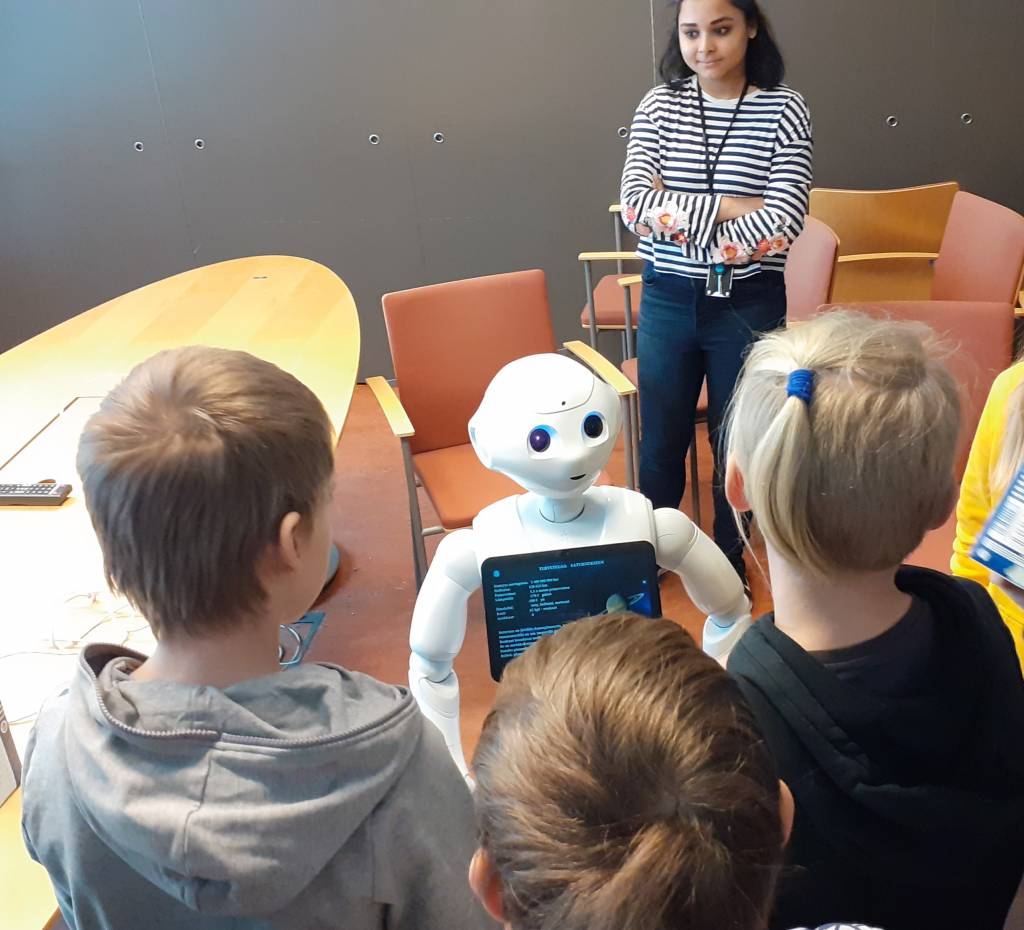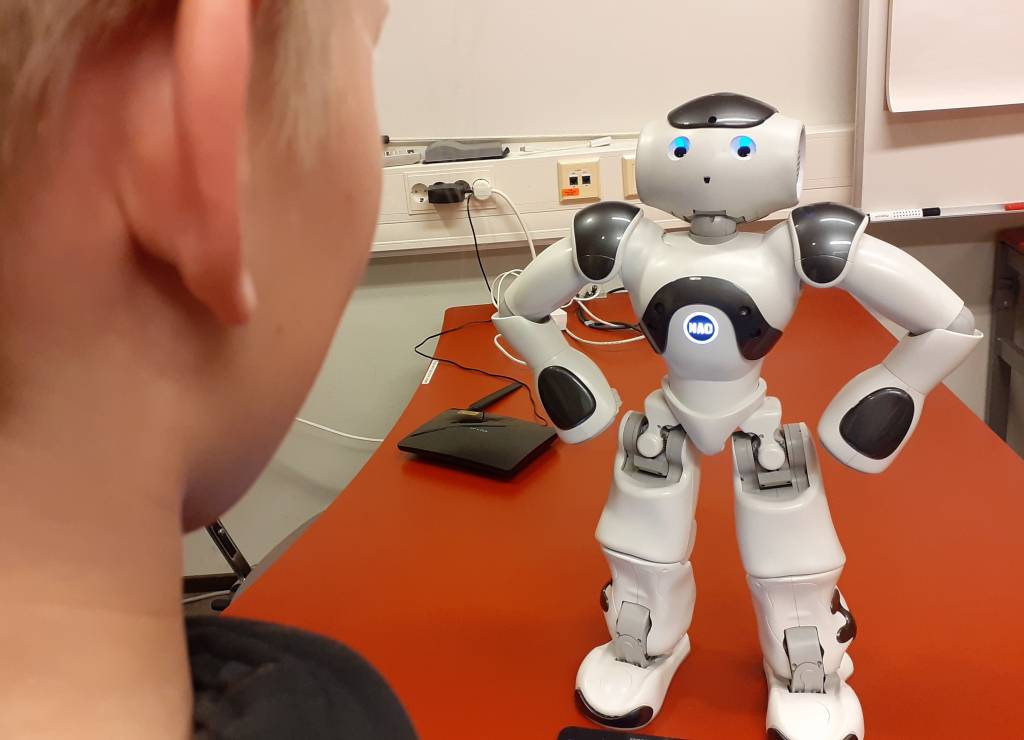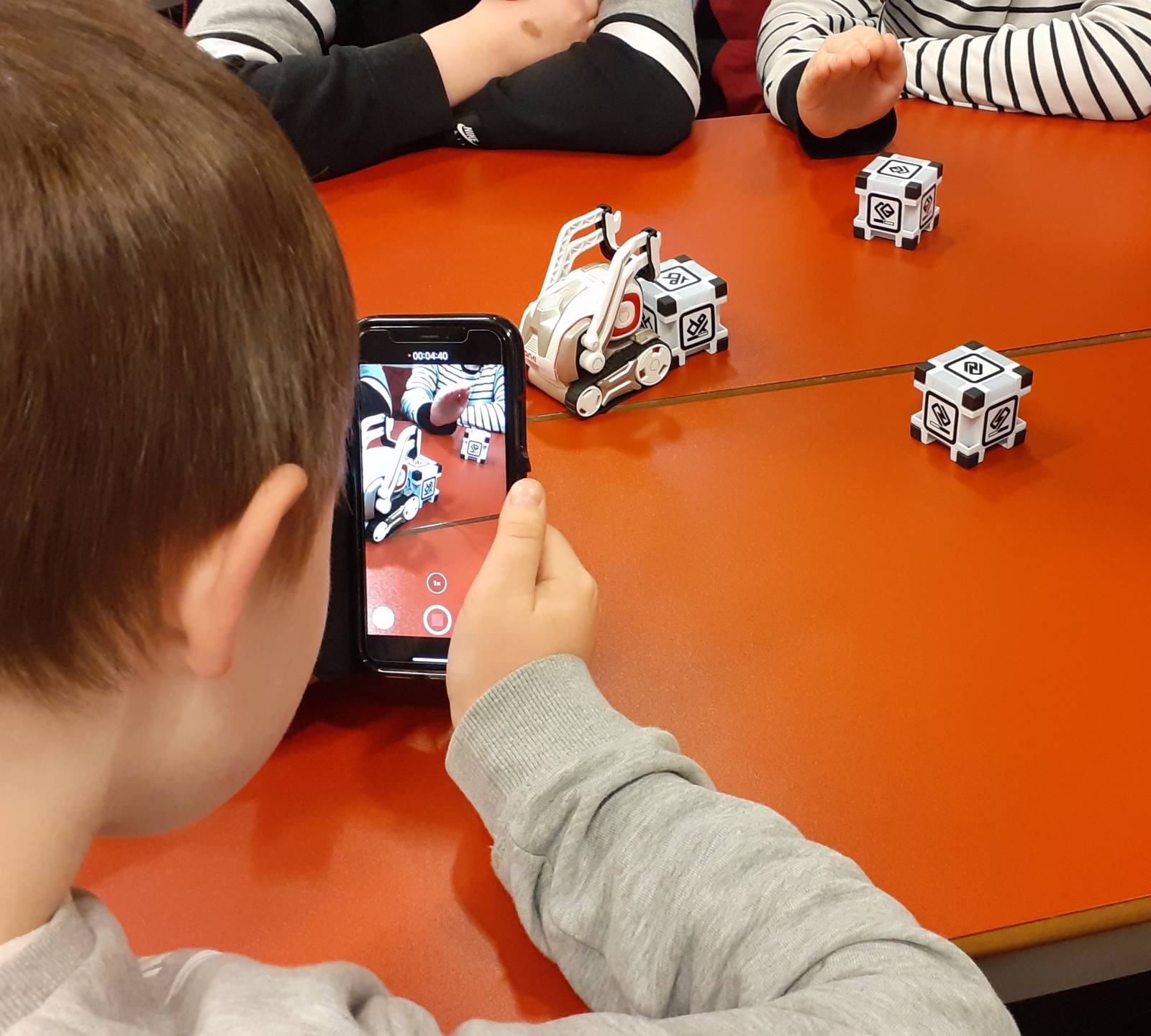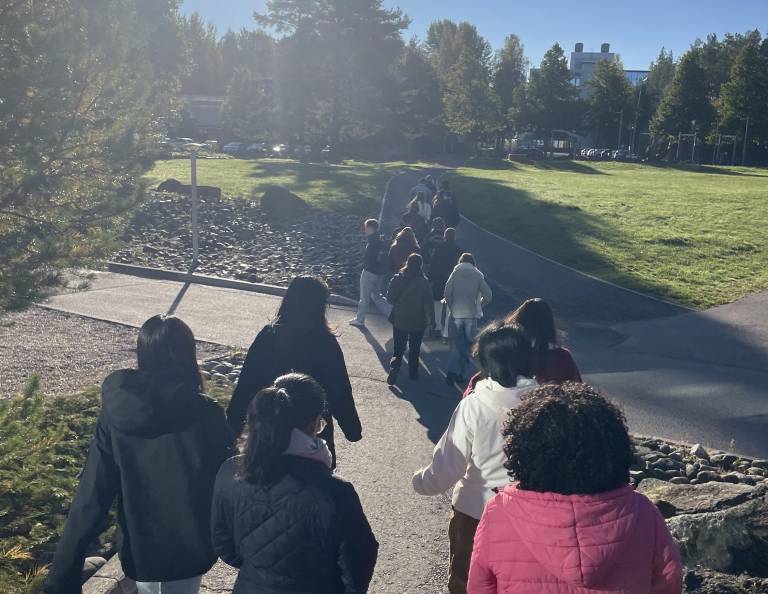The robot we facilitated, Cozmo, is a small, toy-like robot with its own personality and emotions. Cozmo is controlled via a user-friendly application on mobile phone or tablet, and the user can, for example, make it do tricks, play games with it or even explore the world in the eyes of Cozmo thanks to computer vision. Cozmo is very active and interacting with its surroundings all the time. It can sing, show emotions through facial expressions and gestures using its front loader, and snore when it’s sleeping. The pictures on this post show what Cozmo looks like – it’s small and cute, isn’t it? At least the pupils thought so!
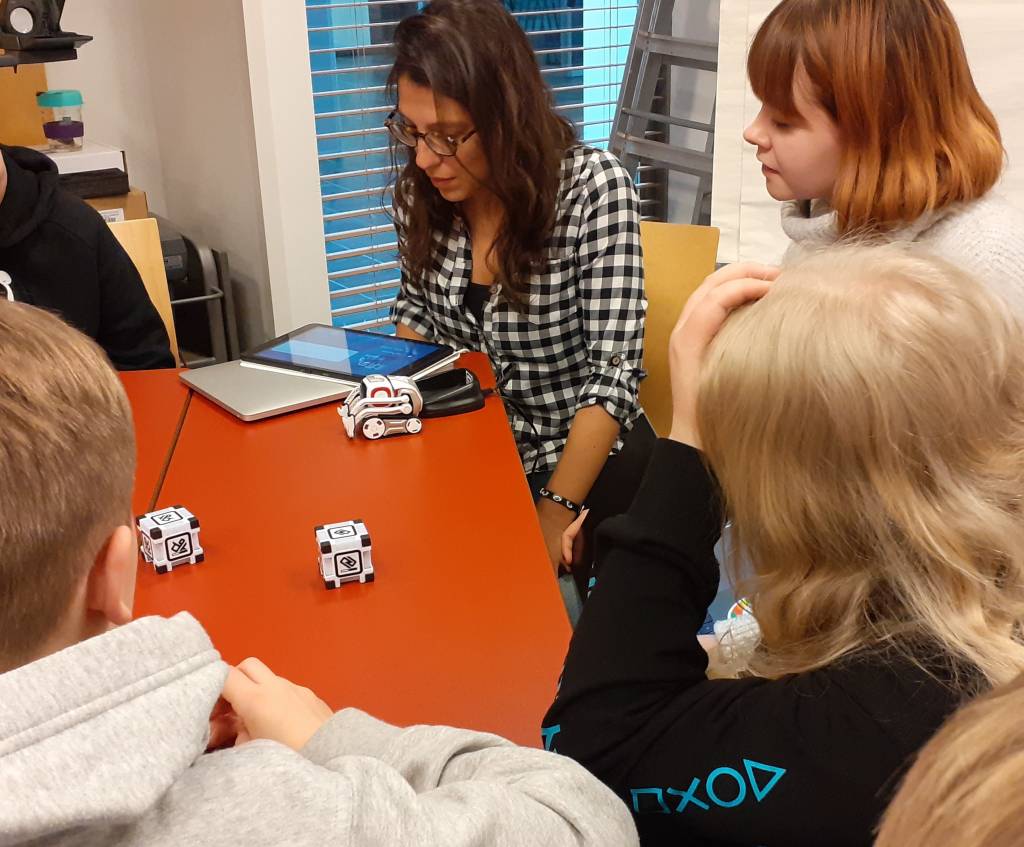
We started the demonstration by letting Cozmo perform some tricks, such as stacking cubes. Cozmo was very proud of itself after succeeding with the task. After this, we let a few volunteers try a speed game against Cozmo. Cozmo was a tough opponent, but so were the pupils and the battles were well-matched. The game was a fun and easy way to take the pupils along and show a piece of Cozmo’s cheeky personality. With some groups, we also had time to try out controlling Cozmo manually and, for instance, make it greet the pupils.
Kids were showing natural behaviors towards Cozmo. For most of them, the first approach was to talk with it, which is a sign that speech interfaces are a natural interaction technique for kids, and developers should consider it in this kind of robots. Non-verbal communication was also exhibited, for instance, one of the kids tried to fist-bumping with Cozmo’s front loader.
Even though the size of this toy-like robot is small compared to the others that were exhibited that day, the emotions expressed by Cozmo got easily the attention of the kids. Due to the facial expressions, sounds emitted, gestures and movements, Cozmo was able to convey clear messages to the pupils, like being disappointed when losing a game. However one important thing needs to be considered, which is that each session with Cozmo was not longer than ten minutes and taking into account the short-span attention of children we wonder for how long this kind of robot would be able to keep children interested and engaged.
Fortunately, developers are going further than simple gaming interactions. Cozmo offers kids an app in which through a visual interface they are able to code the behaviors they imagine. Thus, Cozmo is much more than a toy, letting kids co-create their own game and making this robot a new kind of platform that might change the way kids interact with toys in the future.
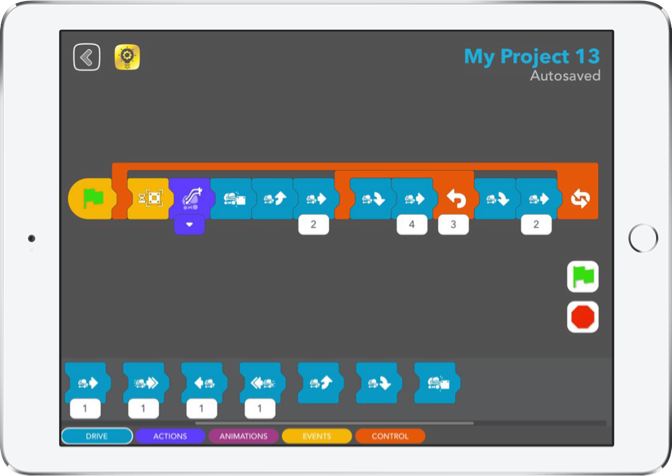
In the end, the hour of demonstrations was over before we knew it. Time goes past quickly when everyone is having fun, right? After all the groups had visited all the robots, it was time for us to say goodbye to the pupils as they moved on to meet the industrial robot in another building.
Written by Veera Eiste and Valentina Ramirez Millan, students of Human-Technology Interaction
Ps. Teacher’s perspective on this activity: I have developed a kind of a model, with which I can offer out-of-the-class hands-on learning experiences for the enthusiastic students around robotics. Basically, I have established a group called Enthusiastic Robot Persons, which have students from human-tech interaction, computing sciences, languages, and AI robotics. Every now and then, I invite students to join some robotic activity, e.g. event organizing and facilitation, writing task, creative session, peer-support session, or some other kind of collaborational session between different stakeholders. The activities have clear learning goals, something that we don’t so much learn on our current courses, but which I consider important and relevant. At the same time, this community-based and multi-disciplinary work model provides an excellent possibility to try out new things together, and do hands-on activities in real settings. There is always something to be learned! Study credits can also be provided for the students based on their learnings and workload. The experience about this activity is so far very very positive. It is just lovely to work with talented and enthusiastic students – we all get a lot of new ideas, some responsibility, and it is very positive collaboration. (Comment by Aino Ahtinen, HTI and RoboUX instructor, proud of our students and happy about the visitors :))
